Online Imagined Black English
Manuel Arturo Abreu
"Everybody want to be a nigga but nobody want to be a nigga." - Paul Mooney as Negrodamus1
"Surely the net space just makes the same old burnt cork blackface routine easier." - Keith Obadike2
Imagined Black English
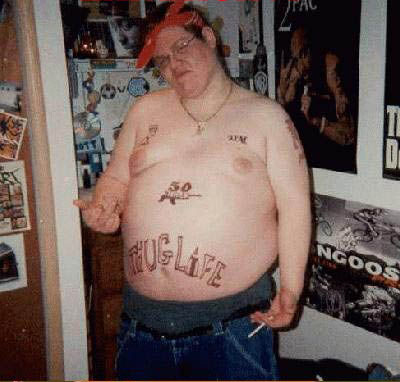
The way people talk always changes, driven language-internally or by social pressures. At any given moment in a language or dialect, certain aspects of speech are stable, and others are undergoing a change in progress. How does it happen? Who is responsible for it? How does the internet affect the process of language change?
I consider some of these questions for the case of Black English, the set of linguistic behaviors available to American members of the African diaspora. In recent decades, the advent of hip-hop and the internet have arguably spread Black media farther than ever before. As well, given that "Black English, especially the cadence, is becoming America’s youth lingua franca, especially since the mainstreaming of hip-hop,"3 I focus on the phenomenon of non-black English speakers with no fluency using real or imaginary linguistic features of Black English, which I call imagined Black English. This phenomenon is becoming more common because, as theorized by Cecilia Cutler, "hip-hop is increasingly claimed to be a multi-cultural lifestyle rather than a symbol of ethnic group identity, particularly by white adolescents.. it seems to allow whites access to a commodified, ephemeral black experience at various moments or phases in their lives without requiring overt claims of black ethnicity, and the sociolinguistic meaning of AAVE [African American Vernacular English] appears to be adjusted in the process."4
This phenomenon has been called borrowed Blackness,5 Imagined African American Vernacular English,6 linguistic appropriation,7 mock Ebonics,8 and linguistic minstrelsy,9 the latter referring to one of the earliest American forms of this phenomenon in minstrel shows.10 Many times these cross-racial language behaviors do "do not correspond to most African Americans’ linguistic patterns."11 Often, Black language is borrowed and deracialized under the guise of being slang, even though slang is “a small set of new and usually short-lived words in the vocabulary of a dialect or language,”12 while Black English is a fully-formed linguistic system, as all dialects and languages are. White supremacist society renders Blackness able to "travel on its own, separate and distinct from black people,"13 globally marketed under systemic racism since ragtime sheet music, black vaudeville, and race records to cultures across the world in the form of language, music, dance, and gesture. Of course, it has always been and "remains exceedingly attractive and possible in this post-black, post-soul age of black cultural traffic to love black cool and not love black people."14
At least since minstrelsy, non-Black Americans have borrowed from Black English and, more generally, Black culture for a variety of reasons, and the digital manifestation of this phenomenon is a part of this lineage. And at least since 1986’s Jive Filter, linguistic minstrelsy has been an aspect of online talk, both in computer code, and in spontaneous speech.15 Both spoken vernacular and internet vernacular are heavily indebted to Black English, "from everyday words... like tote or goober (peanut), to vernacular like hip, cool, chill, dis or 24/7."16 There is literally an app that only sends ’yo’ notifications.17 The internet allows for communication and media dissemination to a wider and more diffuse audience than was once possible: individuals and communities with less and less relationship to black media and linguistic behavior have access to it, with Urban Dictionary and Genius (formerly Rap Genius) only a few clicks away to provide "definitions." These conditions potentially alter or accelerate the process of deracialization by which words enter standard English, as well as provide more contexts for the performance of racist stereotypes. This merits an analysis through the lens of language change, as well as a consideration of revising pre-internet models for the linguistic dimension of borrowed Blackness.
Changing Models

Imagined Black English is an instance of code-switching, the "juxtaposition within the same speech exchange of passages of speech belonging to two different grammatical systems or subsystems."18 Research on code-switching in computer-mediated communication tends to draw on frameworks developed for analyzing spoken, face-to-face discourse.19 While online speech mirrors the debt to Black English evidenced by the spoken vernacular given that "many of the practices of European American youth cultures, including linguistic practices, are borrowed from African American teenagers,"20 face-to-face frameworks may be inadequate for many computer-mediated communication contexts.21 Online talk is largely text-based, and may follow different sets of norms, particularly in more casual digital contexts such as chat.
Previous models22 tended to categorize imagined Black English usage into (a) interpersonal contexts ranging from the vernacular to the institutional, and (b) mediatized contexts such as cinema and advertisement. While this may have been cogent in times when conversation and sociality themselves were not subsumed under capitalism, the corporatization of the internet throws this neat mediatized-nonmediatized distinction into question, since all online linguistic interaction serves as a potential profit venue for digital corporations. As such, pre-internet sociolinguistic models of imagined Black English may require revision to account for online imagined Black English. After all, we rightly decry desperate brands tweeting bae to remain relevant, but we never mention the fact that social media users posting about how their pumpkin spice latte is bae, or how their largely-white poetry reading was lit, are making these corporations money. This amounts to a denial of user agency, and requires correction.
While reasons for imagined Black English range from affinity to mockery to monetization, they generally follow the same pattern: by "reshaping the meaning of the borrowed material into forms that advance their own interest," borrowers make the material "useless or irrelevant, or even antithetical, to the interests of the donor community." Stripped of its original context, "this reshaped meaning may then be imposed on donor speakers,"23 which can be seen in instances such as Katy Steinmetz’s 12 November 2014 New York Times article listing the Black English words ’basic,’ ’bae,’ ’turnt,’ and ’yasssss’ among "words to ban in 2015."24 This came on the heels of her 23 July 2014 article "This is What ’Bae’ Means."25 Deracialized and decontextualized, these redefined words entered the mainstream lexicon at an accelerated rate due to the internet, and their proliferation among white Standard English speakers prompts exhaustion. Robin Boylorn corroborates this general tendency in her 14 January 2015 Guardian article called "Now that white people have declared ’bae’ over, black people can use it in peace."
Further, uses of imagined Black English have always drawn their indexical meanings from the broader systemic context that makes this borrowing possible, since the time of "the genesis of the vernacular," which originated in the slaveholding South.26 "As a consequence of racism, black masculinity in the United States.. has long been ideologically associated with a hyperphysicality that involves physical strength, hyper(hetero)sexuality, and physical violence."27 In the afterlife of slavery, America reifies a set of stereotypes about Blackness— anger, creativity, negativity, stupidity, criminality, poverty, hypersexuality, and others— with which it justifies its denial of already-promised reparations, its continued murder and imprisonment of Black Americans, its ongoing redlining and gentrification policies after the Great Migration, and other antiblack national projects. As such, from the perspective of this larger context, imagined Black English is but one facet of systemic racism. After all, it is the "cultural elite and their allies who help enforce acceptable codes of linguistic conduct,"28using their power to decide the meanings and acceptable contexts of words.
Despite the fact that online imagined Black English largely draws its meanings from the same indexical pool as previous instances of borrowed Blackness, it may nevertheless involve novel linguistic behavior. Thus, is online imagined Black English a linguistic change in progress from pre-internet imagined Black English? In order to consider this question, it’s necessary to first characterize language change in its relation to conscious intention, as well as what William Labov calls the gender paradox.
Does the Gender Paradox Operate Online?
Upwardly-mobile women are the leaders of linguistic change, but are also more likely to adopt standard speech behaviors. William Labov, one of the founders of sociolinguistics, calls this the "gender paradox." Labov identifies two kinds of language change: change from above the level of consciousness, and change from below the level of consciousness.29 This dichotomy corresponds to the split between formal speech and vernacular speech. Change from above tends to begin in formal speech, spreading from upper to lower classes as the latter consciously adopt prestige linguistic forms. On the other hand, change from below primarily begins unconsciously in the vernacular talk of the working and lower-middle class, spreading to upper classes if it becomes more standard or sheds any stigma it might have.
While Labov argues that one of the characteristics of language change, especially from below, is its sporadic character,30 in his search for innovators and leaders of linguistic change, he identifies these leaders as "women who have achieved a respected social and economic position in the local networks. As adolescents, they aligned themselves with the social groups and symbols that resisted adult authority, particularly when it was perceived as unfairly or unjustly administered, without deviating from their upwardly mobile path within the local social structure."31 This alignment with alterity without any loss in social standing results in leaders of linguistic change having wide social networks from which to draw innovation into their own communities. This linguistic transfer is possible given that "if a certain group of speakers uses a particular variant then the social values attributed to that group will be transferred to that linguistic variant."32 These speakers adopt a "Janus-like"33 role in the ways their contact with marginalized cultures make them a beacon for its entry into white culture without any reciprocity.
However, these upwardly-mobile young adult leaders of linguistic change exhibit behavior which Labov calls the "gender paradox." He argues from his data that women "show a lower rate of stigmatized variants and a higher rate of prestige variants than men”34 and “adopt prestige forms at higher rates than men."35 When a change is stable, he claims women tend to prefer prestige forms, whereas when a change from below is in progress, "women use higher frequencies of innovative forms than men do."36 Thus, Labov characterizes the gender paradox as follows: "Women conform more closely than men to sociolinguistic norms that are overtly prescribed, but conform less than men when they are not."37
A standard network-theoretic explanation of the gender paradox is as follows: men’s networks are more densely clustered and local, regional, nonstandard, and resistant to change; women’s networks, on the other hand, tend to be more open and less local, leading to more access to innovative forms as well as a greater tendency to adopt non-regional standard variants.38 Does the gender paradox operate online? Labov’s notions of "local networks" may change in light of the internet, and the accelerated global dissemination of media may also mean a broader set of subversive groups and symbols from which to choose in the articulation and performance of identity, as well as a potentially wider social group in general. In their first report on global internet access, the United Nations’ Broadband Commission Working Group reported in 2013 that only 2% fewer women than men were online in developed countries like the United States. Given that Labov’s generalizations rely mostly on data collected from women living in developed countries, the relatively small size of the broadband gender gap for such nations entails the possibility of women being leaders of online language change.
As such, if online imagined Black English is a change in progress from below, Labov’s argument would entail that non-black women are its leaders. On the other hand, if online imagined Black English is a stable linguistic style variation, then whether non-black women prefer or disprefer it depends on the prestige of the particular feature, as well as whether the prescriptive sociolinguistic norms of its use are overt or covert. Truly answering this question would require quantitative data and is thus beyond the scope of this paper, but its theoretical import is worth considering. To do so, it’s necessary to analyze the contextual prestige of Black English and the body of covert and overt norms surrounding its use.
Norms and the Contextual Prestige of Black English
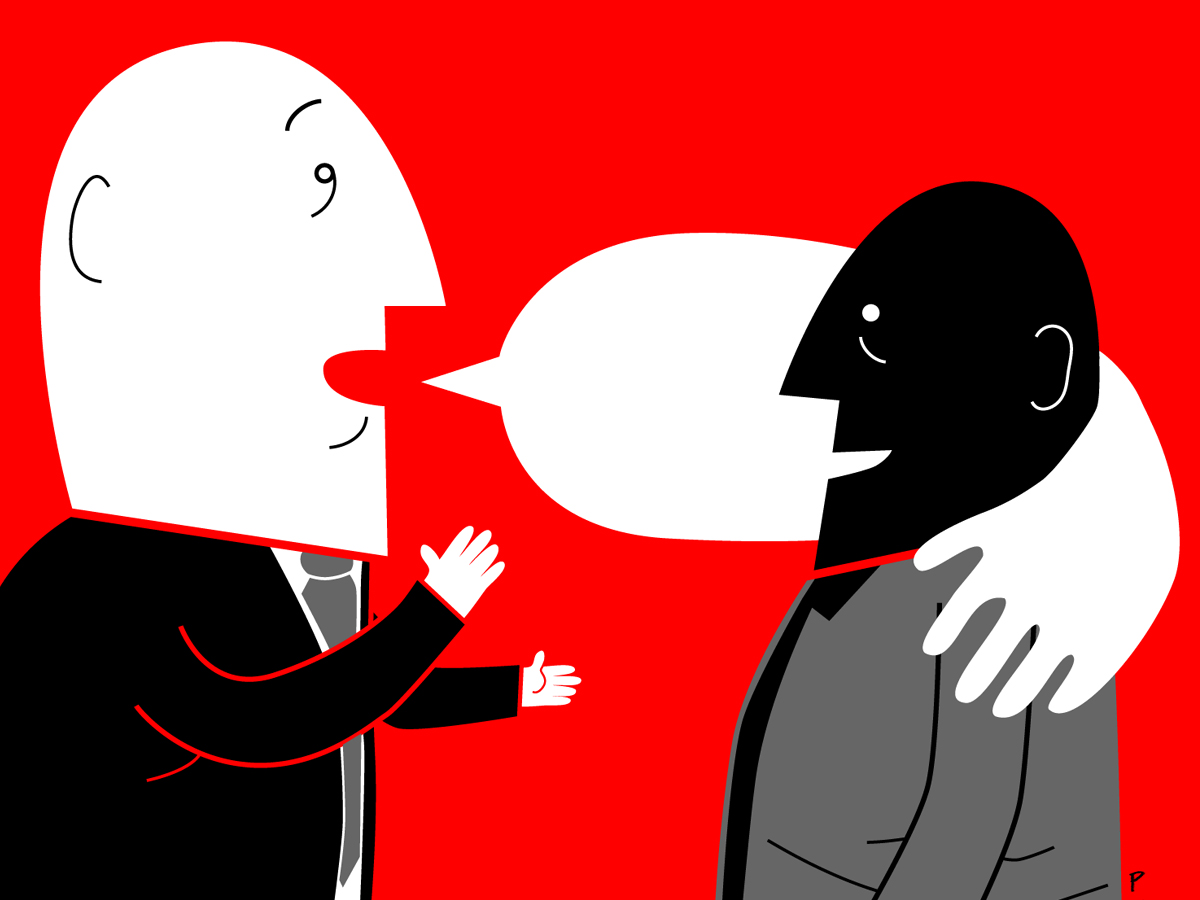
While Black English is "America’s youth lingua franca,"39 the fact remains that "youths of all races and ages... often echo the negative attitudes of their parents, teachers, and the media toward AAVE [African American Vernacular English] and their positive attitude toward SAE [Standard American English.]"40 And despite its true linguistic conservatism— 'ax' is the older form of 'ask,'41 and habitual ’be’ can be traced to Hibernian English —Black English is often stigmatized as a sign of low intelligence,42 to the extent that it is often not considered language.43 This is an example of linguistic subordination, in which linguistic behavior associated with oppressed groups is viewed as linguistically deficient.44 (Indeed, this tendency toward monolithic characterization exists even within sociolinguistics, with scholars commonly claiming that Black English has no regional variation.)45
Therefore, there is a twoness at play in white America’s treatment of Black English: it is ’cool’ currency in youth culture, but it is also bad English. By and large, the use norms are covert, especially in casual contexts. The Linguistic Society of America states that characterizations of Black English as "’slang,’ ’mutant,’ ’lazy,’ ’defective,’ ’ungrammatical,’ or ’broken English’" are incorrect and demeaning.”46 This is true, since, like any other dialect or language, Black English is governed by systematic morphosyntactic and phonological rules. While some may argue that the denigration of Black English is based on individual prejudice, “accent and dialect discrimination in hiring and firing have been tolerated by US courts,”47 and the stigma Black English carries, as well as the dynamics of borrowed Blackness, are facets of systemic antiblackness. Language attitude research shows that this denigration takes on two dimensions: Black English scores low on status-related associations like education and wealth, but scores well on attractiveness-related associations like warmth.48 Other studies, however, show low scores in these attractiveness categories as well.49
The vitriolic controversy surrounding the 1996 Ebonics resolution exemplifies the association of Black English with low status in this set of linguistic ideologies. In the resolution, the Oakland Unified School District recognized Black English as a systematic form of language whose origins are African, as well as recognizing that "teachers often have unjustifiably negative attitudes towards students who speak AAVE [African American Vernacular English]" which "may lead them to have low expectations of such students... and to otherwise stunt their academic performance."50 Students who cannot code-switch between standard English and Black English are at a disadvantage, because non-standard language behaviors among students negatively affect teachers’ attitudes toward students. As such, the Oakland district instated a policy where pedagogy takes into account the disadvantages students face when their primary language is not standard English.51 Essentially, teachers were to approach their lessons for these students as though they were teaching standard English as a second language. The following ad by The National Head Start Association, published in the 9 October 1998 issue of the New York Times, exemplifies the negative response to the resolution.52

While it is true that much of the public outrage was due to media misinterpretation of linguistic terms like "genetic" in the resolution, as well as unclear language caused by the lack of a linguistic advisor in the resolution writing process, those who spoke out against the Oakland Unified School District’s decision made their linguistic ideology clear: Black English is bad English, and educational contexts are no place for it. Indeed, the Oakland case brought the term ’ebonics’ to mainstream prominence. 53 ’ebonics’ came to signify in the white American imaginary all of the negative stereotypes it imposes on Black language. Consider the top Google Image Search results for the term:

But what are the attitudes towards Black English outside of such institutional contexts as school, work, and courts? Despite the covert stigma against Black English, characterized as defective English, in these "standard" contexts, Black English still continues to enter into the mainstream vernacular. However, when Black English terms enter "the lexicon, it is strange how suddenly their origins are not only declared unknown by the dictionary, but seemingly unknowable."54 Linguist John McWhorter claims that Black English "conveys warmth, authenticity, and a touch of seductive danger."55 These indexical meanings take on different significance based on who is speaking, as well as on context: for example, in institutional contexts, Black English faces heavy stigma, while in other contexts, this warmth, authenticity, and seductive danger may be communicative and pragmatic boons. In this sense, the same stereotyped indexical meanings that white supremacist culture imposes on Black English endow it with covert prestige in non-institutional contexts.
Blackness for Sale
To delineate these contextual valences of prestige and stigma, it is instructive to consider Keith Obadike’s digital artwork Blackness for Sale (2001).56Drawn to explore the coloniality of digital language, in which "browsers called Explorer and Navigator... take you to explore the Amazon or trade in the eBay,"57 Obadike takes to the latter to auction off his blackness (the item acquired 12 bids and peaked at $152.50 until eBay shut it down after four days). This work exemplifies Harry Elam’s notion that Blackness is able to "travel on its own, separate and distinct from black people"58as a commodity. Obadike’s product description outlines the benefits that purchasing blackness brings in certain contexts, while also warning against its use in other contexts. While this piece deals with Blackness in global capitalism more generally, its claims apply with respect to Black English. I quote the description in its entirety below, using Martine Syms’ line breaks59:
"This heirloom has been in the possession of the seller for twenty-eight years. Mr. Obadike’s Blackness has been used primarily in the United States and its functionality outside of the US cannot be guaranteed. Buyer will receive a certificate of authenticity.
Benefits and Warnings
Benefits:
- This Blackness may be used for creating black art.
- This Blackness may be used for writing critical essays or scholarship about other blacks.
- This Blackness may be used for making jokes about black people and/or laughing at black humor comfortably. (Option#3 may overlap with option#2)
- This Blackness may be used for accessing some affirmative action benefits. (Limited time offer. May already be prohibited in some areas.)
- This Blackness may be used for dating a black person without fear of public scrutiny.
- This Blackness may be used for gaining access to exclusive, “high risk” neighborhoods.
- This Blackness may be used for securing the right to use the terms ’sista’, ’brotha’, or ’nigga’ in reference to black people. (Be sure to have certificate of authenticity on hand when using option 7).
- This Blackness may be used for instilling fear.
- This Blackness may be used to augment the blackness of those already black, especially for purposes of playing ‘blacker-than-thou’.
- This Blackness may be used by blacks as a spare (in case your original Blackness is whupped off you.)
Warnings:
- The Seller does not recommend that this Blackness be used during legal proceedings of any sort.
- The Seller does not recommend that this Blackness be used while seeking employment.
- The Seller does not recommend that this Blackness be used in the process of making or selling ‘serious’ art.
- The Seller does not recommend that this Blackness be used while shopping or writing a personal check.
- The Seller does not recommend that this Blackness be used while making intellectual claims.
- The Seller does not recommend that this Blackness be used while voting in the United States or Florida.
- The Seller does not recommend that this Blackness be used while demanding fairness.
- The Seller does not recommend that this Blackness be used while demanding.
- The Seller does not recommend that this Blackness be used in Hollywood.
- The Seller does not recommend that this Blackness be used by whites looking for a wild weekend."

Obadike’s list of warnings is meant to clarify how existing consumer and linguistic commodities that index Blackness work: they do not burden the buyer or speaker with the drawbacks of Blackness, but instead draw a phantasmagoric aura from them in a way that justifies antiblack structural racism, as well as overdetermines Blackness, rendering it a flat vector of cool, seductive danger that is tolerated for entertainment purposes and is otherwise eliminated by a militarized police state and its deputized settler citizens. This aligns with the racist overdetermination of Blackness that has been occurring since minstrelsy times, when Black performers had to don burnt cork blackface to “correctly” indicate the Blackness that occupied the white imaginary. Obadike argues that "to many white artists, blackness represents some kind of borderless excess, some kind of unchecked expression."60 The history of borrowed Blackness, from minstrelsy to Mailer’s postwar white negro to the wigger and beyond, operates exactly within the affective landscape Obadike identifies. However, language change is an ecology, not a monolith, and the influence that upwardly-mobile women leaders of linguistic change exert is determined on a community-by-community basis. It’s instructive to look at a number of examples in the case of online imagined Black English.
Gendered Ecologies of Digital Minstrelsy
Online social networks tend to pattern similarly to meatspace ones,61 entailing that generally speaking, upwardly-mobile white women are leaders of digital linguistic change. In the case of online imagined Black English, this is true for terms like ’on fleek,’ which entered the white mainstream via Ariana Grande’s MTV rendition of Peaches Monroe,62 or ’Netflix and chill.’63 However, a more finely-grained view may show that this is not the case in every online linguistic community of practice, revealing a gendered ecology of borrowed Blackness where upwardly-mobile women play different roles in different spaces, and borrowing takes on various entextualized styles based on information format. It is reasonable to assume that online spaces with fewer would-be leaders of linguistic change, or which are unwelcoming to them, reflect their influence less than other spaces. But because content can travel from one online community of practice to another, it is not necessarily the case that male-dominated spaces prevent upwardly-mobile women from being leaders of online linguistic change. Instead, denser, more localized and nonstandard male-dominated communities exist at a different point in the structure than do less local, more standard, change-receptive women communities. The network structure aids the deracialization of the content as it moves toward the digital mainstream and away from ’lawless,’ anonymized areas of the internet.
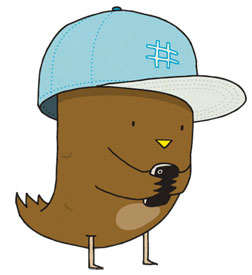
Reddit, the self-described "front page of the internet," is dominated by men.64 Unlike, say, Pinterest, whose user base is predominantly white women,65 it is likely that much of the linguistic innovation on reddit is due to men. The racism of some corners of reddit deserves its own essay; the short version is that reddit has been sort of trying to clean up its act since 2013. With respect to online imagined Black English, the subreddit r/BlackPeopleTwitter operates as a means of surveillance of Black culture and language, engendering a situation analogous to "white male bonding through Black music,"66 except with digital content operating as the relational platform. Unlike racist subreddits like r/niggers, banned in 2013, r/BlackpeopleTwitter has explicit rules against racism and doxxing. Presumably, the subreddit’s users surveil Twitter for content due to its demographics: 28% of Twitter users are Black, while 20% of its users are white.67 But the surveillance of Black Twitter is not specific to reddit. Black Twitter has long been a source of material for those engaging in borrowed Blackness. Further, the monitoring and monolithic characterization of "Black Twitter" has gone on at least since Choire Sicha's 2009 article68 as well as Farhad Manjoo's 2010 Slate article, "How Black People Use Twitter,"69 with its infamous 'Twitter bird of color,' pictured here.

Demographic data are harder to use in constructing a framework for racialization on sites who keep such information private. For example, 4chan, Cracked, BuzzFeed, and other sites have requested that Quantcast not reveal their demographic data. 4Chan, however, self-reports its demographics (pictured here), and like reddit, it is male-dominated.70 4chan is a particularly intense site of content creation activity, described by the Washington Post as "the original incubator for a huge number of memes and behaviors we now consider central to mainstream Internet culture."71 Engineered or otherwise, 4chan's cultural influence is enormous— its founder, moot, was Time's Most Influential Person of 2009 thanks to users manipulating the poll. However, 4chan is not only largely populated by men according to its own reports; it is not welcoming to women. 2014’s Fappening, in which 4chan users leaked hundreds of nude photos of largely women celebrities, sealed the deal on this, but it had been clear at least since 2006, around the time the phrase "Tits or GTFO" began becoming popular on 4chan.
Further, due to its anarchic anonymity, 4chan has long had a history of being a repository for virulent racism. Indeed, in 2010 the "Racists on 4chan" meme rose to popularity. It characterized the "drastic discrepancies between how a typical bigot interacts with minorities in real-life"72 versus on the internet. While it mocks these white bigots who spout slurs online, the meme itself is racist, made by the very same kind of person: it depicts the Black man as a silhouette with minstrel-like bright red lips, and the meme’s original name was "niggerwalk"73:
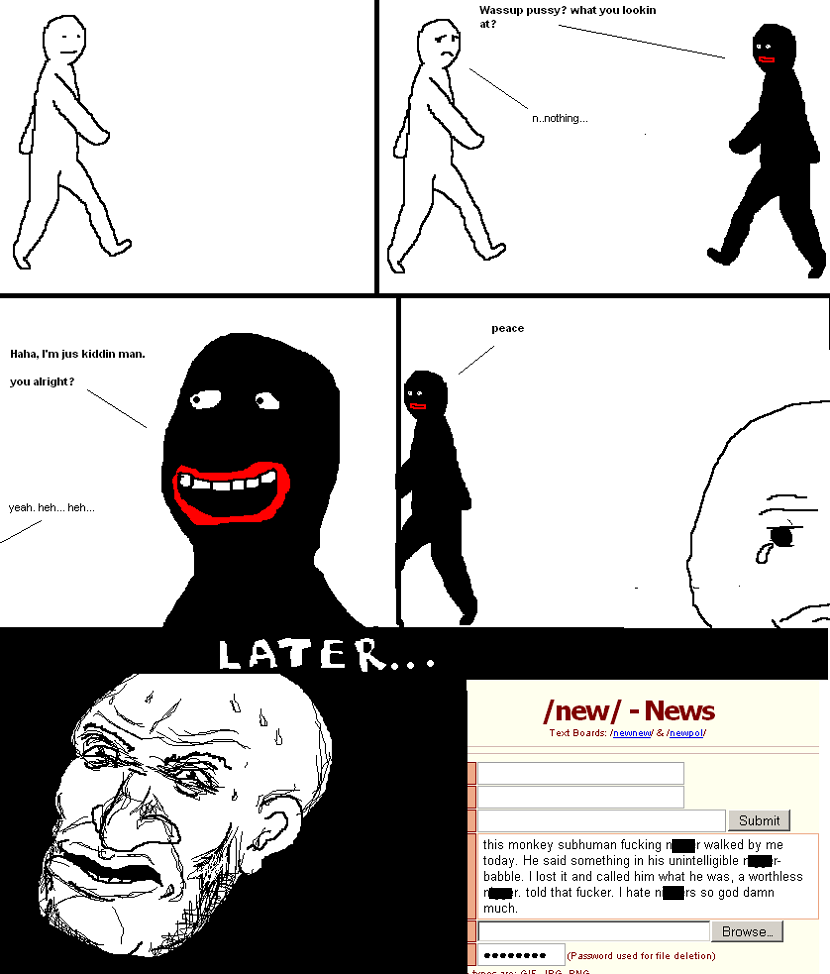
And in June 2010, 4chan users manipulated Google Trends so that the n-word topped the list74:

If 4chan is indeed at the center of innovation in internet culture, with its influence spreading outward toward the mainstream, then it is reasonable to argue that its violent anti-black racism also filters outward and informs the mainstream toolkit available for the performance of digital minstrelsy, however subtle or flagrant. Therefore, while would-be leaders of linguistic change do not seem welcome on 4chan and other male-dominated sites, as these sites’ activity crosses thresholds to other sites and social networks to become more palatable, a version of the content eventually reaches these upwardly-mobile women. A potential example of this process is the recently-popular #RealNiggaHours meme.
#RealNiggaHours
The earliest online mentions of the phrase "real nigga hours" are:
- a 13 Oct 2009 tweet by MrBMB at 3:51am that reads "Real Nigga hours who upp?"75
- a Facebook page launched on 8 April 2011, titled "Real Nigga Hours From 1am-5am Check In #103."76
The phrase denotes the late night hustle, which is an old idea in rap— e.g., Nas said in 1994 that sleep is the cousin of death. While ’nigga’ generally indexes a Black speaker,77 the phrase recently caught on among non-Black internet users, seemingly trafficking in an old stereotype that much Black social media activity, such as Black Twitter, occurred late at night. It began to gain traction thanks to two popular Facebook groups which post memes featuring variations of the phrase and concept: "Niggaz Still WILIN," created on 25 April 2014, and "Real Nigga Hours Who Up," launched on 18 August 2014. Among other kinds of content, these two groups post overcompressed, Steyerlian ’poor images’ styled after black digital content to index masculinity through Blackness. The images generally marry the trope of late night internet use with the injunction to "smash that like," a phrase which likely originated in online video game communities around 2012.78
These two groups emerged in the wake of Urban Dictionary user Joselaw submitting an entry for the phrase:
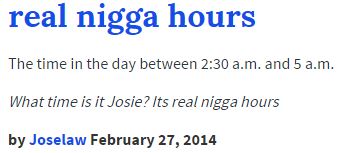
A typical #RealNiggaHours image looks like the following:

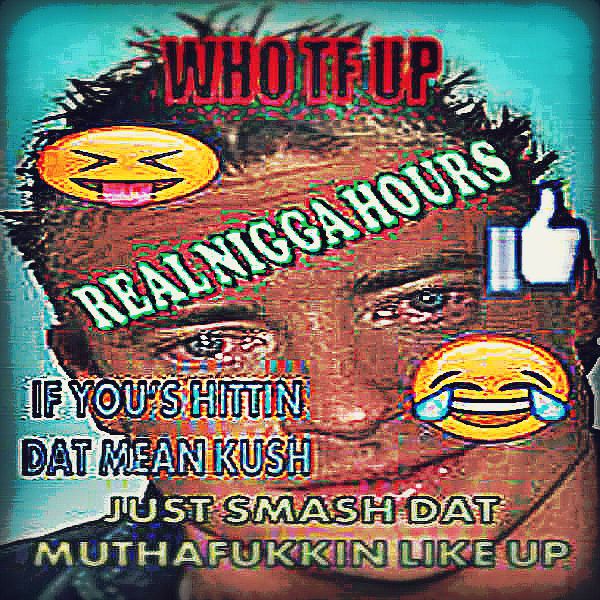
The phrase eventually reached the BlackPeopleTwitter subreddit, and as such a more mainstream white gaze, with Redditor Ahseyo submitting the following image macro on 25 September 201579:
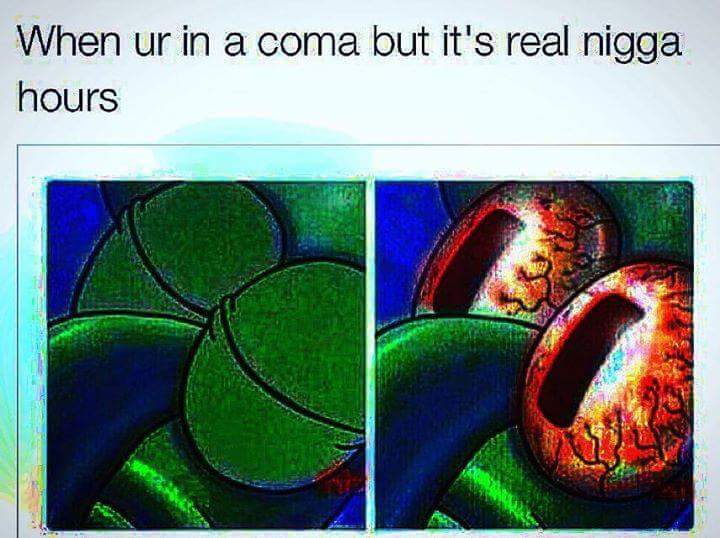
Five days later, Ryder Ripps, a white net artist, posted the article "11 Wild Reasons Why #RealNiggaHours Is The Greatest Meme Of All Time" to Medium, around the same time the “#RealNiggaHours” KnowYourMeme page was created. In his Medium article, Ripps engages in the standard pattern of "reshaping the meaning of the borrowed material into forms that advance [his] own interest," to make the borrowed material "useless or irrelevant, or even antithetical, to the interests of the donor community."80 He is aware that #RealNiggaHours "can be interpreted as offensive, especially when its purveyors are white. It can be interpreted as making fun of meme formats that are prevalent within the black [sic] community."81 However, he instead sees it as "illuminating truths about shared internet experience, and not a thing about race."82 Note well the antiblack mental gymnastics at work here: the use of a slur is meant to bring (white?) people together with respect to time, ’the ultimate shared experience.’
For Ripps, the meme’s use of the slur is also about freedom. His tenth reason for #RealNiggaHours being the greatest meme of all time is that it "represents pure freedom," which echoes Obadike’s claim that "to many white artists, blackness represents some kind of borderless excess, some kind of unchecked expression."83 This holds across history: it is as true for dada sound poets who claimed "that their nonsensical utterances were based on the sounds that Negroes make"84 as it is for white male meme makers. The threat of mainstream muzzling, which Ripps seems to imply has happened to memes such as doge, lolcats, and others, is not present to stunt this freedom. For Ripps, #RealNiggaHours is "wayyyyy to[o] abstract and edgy for normies to get. #RealNiggaHours is truly for real ones only, you WILL NOT FIND this meme in Urban Outfitters campaigns." I think the implication here is that Ripps fancies himself a real nigga (or "real one" as he says) because he sometimes stays up late online, and makes memes using or referencing antiblack slurs.
Ripps is correct that a meme format with a slur will probably not catch on in the mainstream. However, recall what was stated earlier: as content styles "surface upward" from less mainstream sites to more mainstream ones, the content becomes more palatable— that is to say, deracialized. Ripps seems to be unaware of his own role in this mainstreaming process: he aligns himself with the "Real ones" despite arriving late to the meme, arguing that it’s "not a meme people who aren’t HEAVY users will understand." Given the accelerated nature of media dissemination, this process has arguably already happened with #RealNiggaHours, evidenced by the following image posted to /r/CrappyDesign with no mention of racialized origins on 6 October 2015:
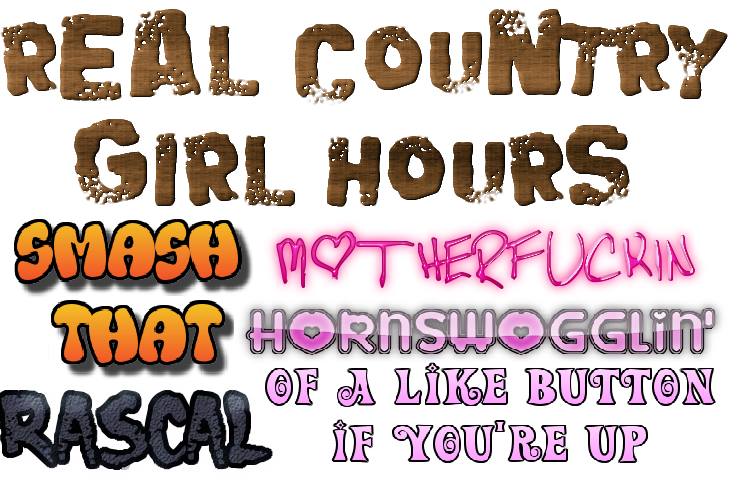
In this case, reddit may be analyzed as a sort of threshold between the "deeper corners" of the internet which are unwelcome to leaders of linguistic change, such as 4chan, and the digital mainstream. Of course, in order to formulate a more thorough analysis of how different gendered online communities of practice interact, and how this network structure plays into both the process of deracialization and antiblack iconicity, I would require quantitative data. I hope to have provided a theoretical sketch in this paper for future researchers to pursue data collection, in order to more fully characterize the relationship between IRL and URL borrowed Blackness.
In the 19th century, minstrel shows seem to have emerged among white American men as a response to a fomenting abolitionist movement and increasing job competition from free blacks. Descendants of this lineage are far and wide, such as John Berryman’s Henry in the 77 Dream Songs, which won a Pulitzer in the Civil Rights Era for a portrayal of Americanness that included Henry’s minstrel sidekick Sir Bones. While Katherine Davis argues that "Berryman made it clear that he meant the [minstrel] dialect to express himself as ‘imaginary Negro’ . . . going beyond mere sympathy to an imaginative identification with oppressed peoples,"85 this act is clearly part of a long lineage of minstrelsy that draws on negative stereotypes of American Blackness in the construction of white identity, and in this case a white aesthetic. In light of this historical context, the case of hip-hop’s global and digital dominance in a time of #BlackLivesMatter presents a new example in which political turmoil results in a response from whites and other non-Blacks involving borrowed Blackness. As Obadike puts it, "surely the net space just makes the same old burnt cork blackface routine easier."86
Endnotes
- Chappelle’s Show Season 1, Episode 5. Aired 19 February 2003.
- Fusco, C. 2001. All Too Real: The Tale of Black Sale: Coco Fusco interviews Keith Townsend Obadike. Thing Reviews.
- Linguist John McWhorter quoted in Henderson, Nia-Malika. 2009. Blacks, whites hear Obama differently. Politico.com, 3 March 2009 (source).
- Cutler, Cecilia. 1999.Yorkville crossing: White teens, hip hop and African American English. Journal of Sociolinguistics 3: 435.
- Bucholtz, M. 1999. You da man: Narrating the racial other in the production of white masculinity. Journal of Sociolinguistics 3: 443-460.
- Chun, E. 2001. The construction of White, Black, and Korean American identities through African American Vernacular English. Journal of Linguistic Anthropology 11: 52-64.
- Hill, J. 2011. The Everyday Language of White Racism. Oxford: Blackwell Publishing: 158; Reyes, Angela. 2005. Appropriation of African American slang by Asian American youth. Journal of Sociolinguistics 9.4: 509.
- Ronkin, M. and Karn, H. 1999. Mock Ebonics: Linguistic racism in parodies of Ebonics on the internet. Journal of Sociolinguistics 3: 360-380.
- Lopez, Q. 2009. Imitation or influence: White actors and Black language in film. Texas Linguistic Forum 53: 110–120; Bucholtz, M. and Lopez, Q. 2011. Performing blackness, forming whiteness: linguistic minstrelsy in Hollywood films. Journal of Sociolinguistics 15.5: 680–706.
- See Mahar, W. 1985. Black English in early blackface minstrelsy: A new interpretation of the sources of minstrel show dialect. American Quarterly 37: 260– 285.
- Bucholtz 1999: 445-446.
- Rickford, R. 1999. African American Vernacular English. Malden: Blackwell Publishers, Inc: 321.
- Elam, H. 2005. Change Clothes and Go: A Postscript to Postblackness. Black Cultural Traffic: Crossroads in Global Performance and Popular Culture (eds. H. Elam, Jr. and J. Kennell). Ann Arbor: The University of Michigan Press: 386.
- Ibid.
- The Jive Filter is the earliest in an antiblack tradition of ’translator’ computer programs, and is followed by examples such as De Ebonic Lectric Libary O De Classicks (1997), ebonics.irc (1999), Gizoogle (2005), englishtoghetto.com (2011), and others. This algorithmic heritage of digital minstrelsy is worth exploring further.
- Young, K. 2012. The Grey Album: On the Blackness of Blackness. Minneapolis: Graywolf Press: 130.
- Technically, you can currently actually attach links and location info to your “yos.”
- Gumperz, J. 1982. Discourse Strategies. Cambridge: Cambridge University Press: 59.
- Androutsopoulos, Jannis. 2013. Code-switching in computer-mediated communication. Pragmatics of Computer-mediated Communication (eds. S. C. Herring, D. Stein & T. Virtanen) Berlin: de Gruyter Mouton: 667.
- Bucholtz, Mary. 2001. The whiteness of nerds: Superstandard English and racial markedness. Journal of Linguistic Anthropology, 11.1: 86.
- Hinrichs, Lars. 2006. Codeswitching on the Web. Amsterdam: John Benjamins: 28-30.
- See Bucholtz 1997, 1999; Cutler 1999; Hatala 1976; Labov 1980; Sweetland 2002.
- Hill 2011: 158.
- Steinmetz, K. 2014. Which Word Should Be Banned in 2015? Time (source).
- Steinmetz, K. 2014. This is What ‘Bae’ Means. Time (source).
- Rickford 1999: 324.
- Bucholtz 1999: 444.
- Zeigler, M. and Osinubi, V. 2002. Theorizing the Postcoloniality of African American English. Journal of Black Studies 32.5: 588.
- Labov, W. 2007. Transmission and Diffusion. Language 83.2: 348.
- Labov, W. 2001. Principles of Linguistic Change, Vol. 2: Social Factors. Malden, MA: Blackwell Publishing: 75.
- Ibid, 409.
- Labov, W 1972. Sociolinguistic Patterns. Philadelphia: University of Pennsylvania Press: 25.
- Hewitt, Roger. 1986. White talk Black talk: Inter-racial friendship and communication among adolescents. Cambridge and New York: Cambridge University Press: 144.
- Labov 2001: 266.
- Ibid, 272.
- Ibid, 292.
- Ibid, 293.
- Romaine, S. 2003. Variation in Language and Gender. The Handbook of Language and Gender (eds. Holmes, J. and Meyerhoff, M). Maiden, MA and Oxford: Blackwell Publishing: 98-118.
- Linguist John McWhorter quoted in Henderson, Nia-Malika. 2009. Blacks, whites hear Obama differently. Politico.com, 3 March 2009 (source).
- Rickford 1999: 284.
- Old English "acsian" → Middle English "axe" → Modern English "ask." E.g., from the 1535 Coverdale Bible, the text’s first complete English translation: “Axe, and it shalbe geuen you: Seke, and ye shall fynde: knocke, and it shalbe opened vnto you.” Matthew 7:7.
- Ronkin and Karn 1999.
- Ibid.
- Lippi-Green, R. 1997. English with an accent: Language, ideology, and discrimination in the United States. London & New York: Routledge.
- For discussion of regional variation of Black English, see Hinton, L. N., and Pollock, K. E. 2000. Regional Variations in the Phonological Characteristics of African American Vernacular English.World Englishes 19.1:59-71 and Thomas, E. R. 2007. Phonological and Phonetic Characteristics of AAVE. Language and Linguistics Compass: 450-475.
- Resolution On The Oakland "Ebonics" Issue Unanimously Adopted at the Annual Meeting of the Linguistic Society of America, 1997.
- Rickford 1999: 302.
- See Buck 1968; Irwin 1977; Johnson & Buttny 1982; Garner & Rubin 1986; Speicher & Mahan 1992.
- See Bishop 1979; Larimer et al 1988; Doss & Gross 1992, 1994; White et al 1998.
- Ibid: 283. A1973 survey of 422 American teachers of various races also found that 40% held negative attitudes towards Black English, 40% held positive opinions, and 20% were ambivalent. Taylor, O. 1973. A survey of bidialectal language arts programs in the United States. Journal of Negro Education 52: 35-35.
- Precedent for this case includes a successful 1977 court case in which Black working-class mothers whose children attended the Martin Luther King Junior Elementary School sued the Ann Arbor, MI school district, arguing that their children should be educated the same way as other students.
- The poster reads: "Does this bother you? It should. We’ve spent over 400 years fighting for the right to have a voice. Is this how we’ll use it? More importantly, is this how we’ll teach our children to use it? If we expect more of them, we must not throw our hands in the air and agree with those who say our children cannot be taught. By now, you’ve probably heard about Ebonics (aka black [sic] English). And if you think it’s become a controversy because white America doesn’t want us messing with their precious language, don’t. White America couldn’t care less what we do to segregate ourselves. The fact is language is power. And we can’t take that power away from our children with Ebonics. Would Dr. Martin Luther King, Malcolm X, and all the others who paid the price of obtaining our voice with the currency of their lives embrace this? If you haven’t used your voice lately, consider this an invitation."
- Williams, R. 1975. Ebonics: The True Language of Black Folks. St. Louis, MO: Institute of Black Studies.
- Young 2012: 130.
- Linguist John McWhorter quoted in Henderson, Nia-Malika. 2009. Blacks, whites hear Obama differently. Politico.com, 3 March 2009 (source).
- See ebay item Keith Obadike’s Blackness.
- Fusco, 2001.
- Elam 2005: 386.
- Syms, M. 2013. Black Vernacular: Reading New Media. Presented at SXSW Interactive 2013.
- Fusco 2011.
- Pérez-Sabater, C. 2012. The Linguistics of Social Networking: A Study of Writing Conventions on Facebook. Linguistik online 56.2.
- See Ariana Grande’s Vine.
- See Brittany Furlan’s Vine, as well as Kevin Roose’s timeline for ’Netflix and chill’ at Fusion.
- Duggan, M and Smith, A. 2013. 6% of Online Adults are reddit Users. Pew Research Center, Washington, D.C.
- Duggan, M., Ellison, N., Lampe, C., et al. 2015. Demographics of Key Social Networking Platforms. Pew Research Center, Washington, D.C.; Krogstad, J.M. 2015. Social media preferences vary by race and ethnicity. Pew Research Center, Washington, D.C.
- Keil, C. and Feld, S. 1994. Music Grooves: Essays and Dialogues. Chicago: The University of Chicago Press: 2.
- Duggan, M., Ellison, N., Lampe, C., et al. 2015. .
- "What Were Black People Talking About on Twitter Last Night?".
- "How Black People Use Twitter." Slate.
- See: http://www.4chan.org/advertise.
- Dewey, C. 2014. Absolutely everything you need to know to understand 4chan, the Internet’s own bogeyman.The Washington Post.
- http://knowyourmeme.com/memes/racists-on-4chan.
- Ibid.
- Franzen, C. 2010. Google Trends Hacked With Racial Slur (Again!). Politics Daily.
- https://twitter.com/MrBMB/status/4830333176.
- https://www.facebook.com/pages/Real-Nigga-Hours-From-1am-5am-Check-In-103.
- Spears, A. 1998. African-American language use: Ideology and so-called obscenity. African-American English (eds. S. Mufwene, J. Rickford, G. Bailey, and J. Baugh). London: Routledge: 226-250.
- See: http://knowyourmeme.com/memes/smash-the-like.
- See: https://www.reddit.com/r/BlackPeopleTwitter/comments/3mc6dr/real_nigga_hours/.
- Hill 2011: 158.
- Ripps, R. 2015. 11 Wild Reasons Why #RealNiggaHours Is The Greatest Meme Of All Time. Medium.com.
- Ibid.
- Fusco 2011.
- Ibid. See for example Huelsenbeck’s chants negres, or Picabia’s
- Davis, K. 1985. ’Honey Dusk Do Sprawl’: Does Black Minstrel Dialect Obscure The Dream Songs? Language and Style 18.1: 33-34.
- Fusco 2011.